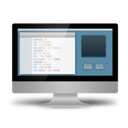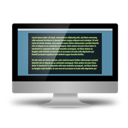 Every web developer needs a set of tools to begin web development. The following list of tools can help you get started:
Every web developer needs a set of tools to begin web development. The following list of tools can help you get started:
- A good computer with plenty of memory, hard drive space and a speedy processor. Choose the computer that fits your needs.
- You’ll want to develop locally; build sites on your own computer. A web server lets you develop and test web sites on your computer whether or not you have an internet connection. You can install a web server likeXAMPP. If you want to go the Microsoft path, you can install their Microsoft Web Platform Installer.
- As a web developer, you’ll need to create or edit photographs and graphics. By loading software like GIMP or Adobe Photoshop, you can make adjustments to images for your web site. Even if you hire a graphics designer to make logos for you, you still need a photo/image editor to make minor adjustments.
- You’ll need web development tools. There are many tools to choose from. You can build a web site using a text editor like Notepad++ or TextMate. Or you can use a development tool like Dreamweaver, Visual Web Developer or Aptana.
- More than 1 browser. Not all web sites look the same in all web browsers. You’ll want to install more than IE to test your designs. If you build mobile, you’ll also want to test it on more than one device or mobile emulator.
- Web Tutorials and cheat sheets. Tutorials teach you how to complete a specific task. A task like setting up a web server, creating a CSS navigation or anything else that you need to do. As a web developer you should have a collection of web design and development sites like Web Design Dev or StackOverFlow. A cheat sheet is a short guide that contains tips and shortcuts for a certain programming language, web design technique or framework. Here are 50 cheat sheet for web designers and developers.
Once you have your computer setup for web development, you can start building web sites. You need a knowledge of HTML, CSS and JavaScript to build static websites. From that point, you can choose to build dynamic web sites by learning PHP, MySQL and a content management system like WordPress or Joomla. Or you can choose to start learning ASP.Net, Ruby or Java. Whether you choose the Microsoft or Open Source path, there are plenty of things to learn and tools to use.


